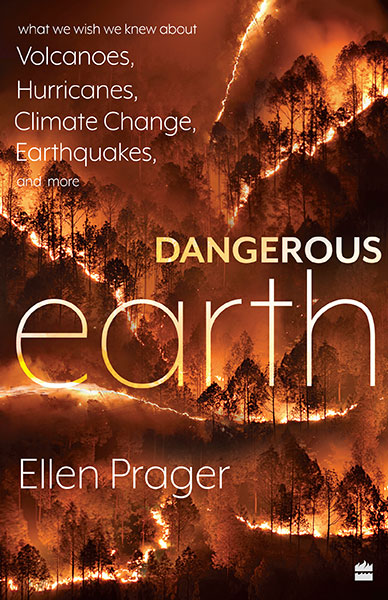
The history of human existence has been fraught with such exigent calamities that led societies from pre-historic times to offers prayers for “peace to be in the universe.” Explained through religion or myth, such prayers have been a way of dealing with the dangers of living on earth. While the earth remains a wondrous planet, its frustratingly complex existence had a violent past to which it seems to be returning. Marine biologist Ellen Prager examines the awesome forces of creation which are equally devastating and remain perplexing. Through an illuminating look at the range of natural events, from earthquakes to volcanoes and from tsunamis to hurricanes, Prager lists the wish-we-knew about the dynamic phenomena that continue to remain unknown while frustrating and fascinating the scientific community.
The book seeks to respond to the most compelling question: Why can’t we better predict the natural disasters? Part of the answer to this question is that the Earth’s processes are dynamic, ephemeral and their origin are hidden from view. Furthermore, our historical record of events is a blip in the planet’s billions of years of existence. Does that reflect upon human inability to predict the future? By studying some of the devastating events in recent times, Prager concludes that preparation and not prediction holds the key to prepare for what lies ahead. This could be disturbing news but she has valid reasons to extend her argument.
Take the case of Miami where since 2006 the average rate of sea-level rise is three times the global average of about 3 millimeters rise per year. The sunny days flooding in Miami has forced the local government to spend hundreds of millions of dollars in infrastructure without being aware about how long the situation will continue to worsen. Given that there are more than seven hundred million people living in low-lying coastal areas across the world, the science of sea-level rise has yet to deliver credible forecast about the impending threat. Consequently, how far and how fast will the sea rise remains open to speculation.
Prager writes with all the imaginative sympathy of a storyteller, with an overarching concern on the gaps in research to understand the nature of change better. Picking detailed stories of some of the game changing major events—Mount Pinatubo volcano of Philippines, Indian Ocean Tsunami of Sumatra, Hurricane Harvey in Texas—the author highlights what remains unknown about these dynamic phenomena. In addition to giving insights on each of the events, one gets to know recent attempts at advancing scientific quest toward understanding earth’s warning signals. Dangerous Earth makes absorbing reading on the unexpected and acts as an alert on knowing how to protect lives, property and economic stability.
Much has been written in recent times on climatic events, but it is the well-reasoned and engaging explanation offered by Prager that makes it a riveting read. Given the recent spurt in extreme weather events, scientists now consider this a whole new field of science which may be with or without the influence of climate change. The list of climatic unknowns is only beginning to expand, throwing new challenges to understand dangers and the risks involved. No wonder, the recent thundery development that caused widespread damage in some parts of Delhi during May this year had caught the India Meteorological Department (IMD) off guard. Prediction is indeed crucial, but preparedness is no less important.
While highlighting the need for focused research on climatic events and capturing the new areas of scientific enquiry, Prager points out toward the inevitability of dramatic change that is upon us—turning the beautiful planet against its own inhabitants. There can be no denying that there have been similar periods of warming in Earth’s past, it is not the actual temperature that is the issue but the rapid pace at which the global thermometer is rising that is unusual and problematic. It is the comprehensive undertaking on the extreme events that will open new avenues of research in reducing the impacts of extreme events. Loaded with in-depth narratives on recent catastrophic events, Dangerous Earth is an eye opener and a call to devise and develop ways and means of reducing the impacts of a violent planet on its inhabitants and infrastructure.
